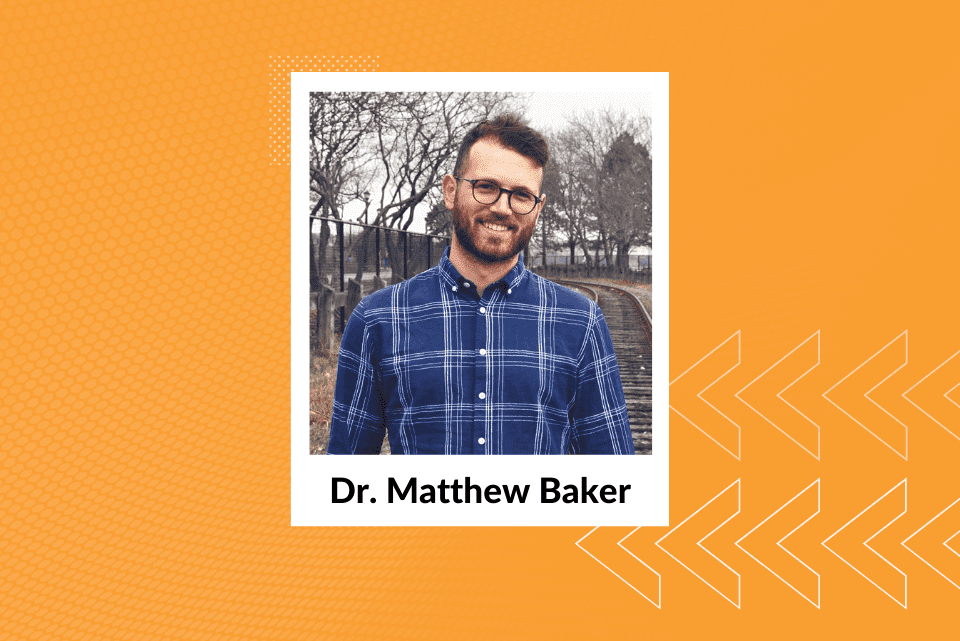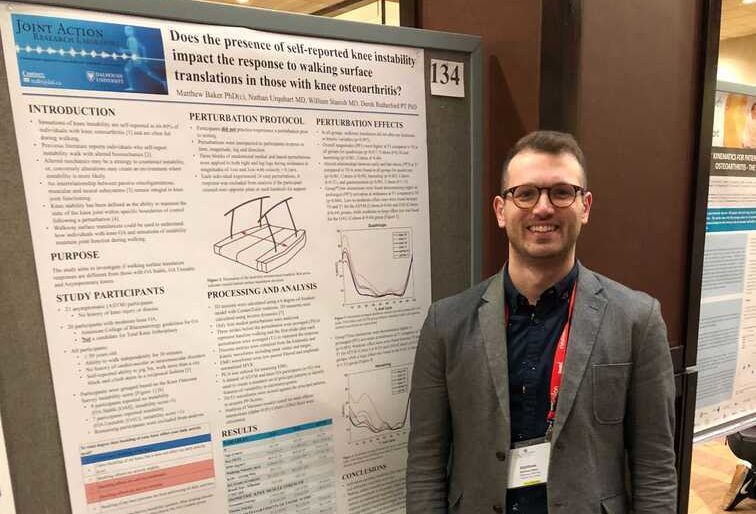
“Behind the Screen” is a spotlight series that introduces the people of Kinduct. This instalment features Dr. Matthew Baker.
What’s your role at Kinduct and how long have you been with the company?
I am currently a Technology Implementation Specialist, and I have been working with Kinduct for seven months.
Can you tell us about your educational background?
I completed my PhD in Health and Master’s in Rehabilitation Research from Dalhousie University, and my undergraduate degree in Kinesiology from Acadia University. I did the majority of my graduate research out of the Joint Action Research (JAR) lab, housed within the School of Physiotherapy. There, I studied human movement and muscle activation patterns of the lower extremity joints during walking, specifically in those with chronic pathologies.
With the JAR lab located in the physiotherapy school, I had the unique opportunity to instill evidence-based clinical approaches, while in return having constant conversations regarding the clinical context for my research.
These experiences allowed the opportunity to understand the gaps that exist in implementing walking analysis in clinical settings, but also the potential that walking assessments provide in improving how we care for those with musculoskeletal disease and injury.

What attracted you to this job at Kinduct?
During my PhD at Dalhousie, Kinduct announced a private-public sector collaboration to introduce innovative orthopaedic assessment tools to improve patient outcomes, specifically working with companies using technology to assess and monitor walking.
My research always focussed on patients being triaged for either surgical or conservative treatment pathways, but the limitations of our work has always been that the equipment to monitor gait isn’t financially or technically approachable in a clinical setting. Seeing that Kinduct, Nova Scotia Health, OrthoMX and Emovi had created a partnership to address these issues, I reached out to Kinduct the same day, and started communicating with the company to see how my skills could be utilized to help advance this cause.
Another attractive quality for me was in regards to the local community messaging from Kinduct’s leadership. Kinduct always recognized its roots in Nova Scotia, and the role the province has played in its growth.
What’s the most rewarding part of your job?
I have a unique opportunity to contribute to the future of health and wellness both locally and globally, and Kinduct provides the opportunity to apply my research in a tangible way. Translating my knowledge of objective outcomes related to human movement patterns to clinical staff and patients with chronic and acute injury and disease is exciting progress in adopting objective measures of musculoskeletal functioning in healthcare settings.
I strongly believe these can improve the treatment of musculoskeletal conditions and minimize the strain on our health systems. It is very rewarding to work towards improving our health care model, working within a company that aligns with my passions for making people better.
What do you like most about the intersection between health and technology?
The intersection of health and technology brings many benefits and many challenges. One of the things I like the most is that technology has given the patient more control and empowerment in the experience of navigating the healthcare system. Digital health has created a world where health metrics are at our fingertips. Acute and chronic injury or disease can change and take over our lives, impact how we can move, participate and experience the world. These changes can make us feel powerless, as the future seems to be unknown.
Healthcare technology can give us the opportunity to connect to health care professionals, monitor our progress and provide us with a voice that hasn’t existed before. This also benefits practitioners, as they can provide more informed treatment plans, and adapt to roadblocks quicker. I’m excited for the growth between health and technology in the next decades, as I feel like our systems will be very different.

When you’re not working, how do you spend your free time?
I love to spend time with my family. My wife and I have an 18-month-old daughter, and are expecting another baby in the summer. As a family, we love to stay active by exploring Nova Scotia; hiking, biking, and camping around the province. With spring on the horizon, my daughter has taken to digging in our gardens, so a big family activity of ours is getting our gardens ready for the summer.
Download our collection of customized integration reports:
DOWNLOAD